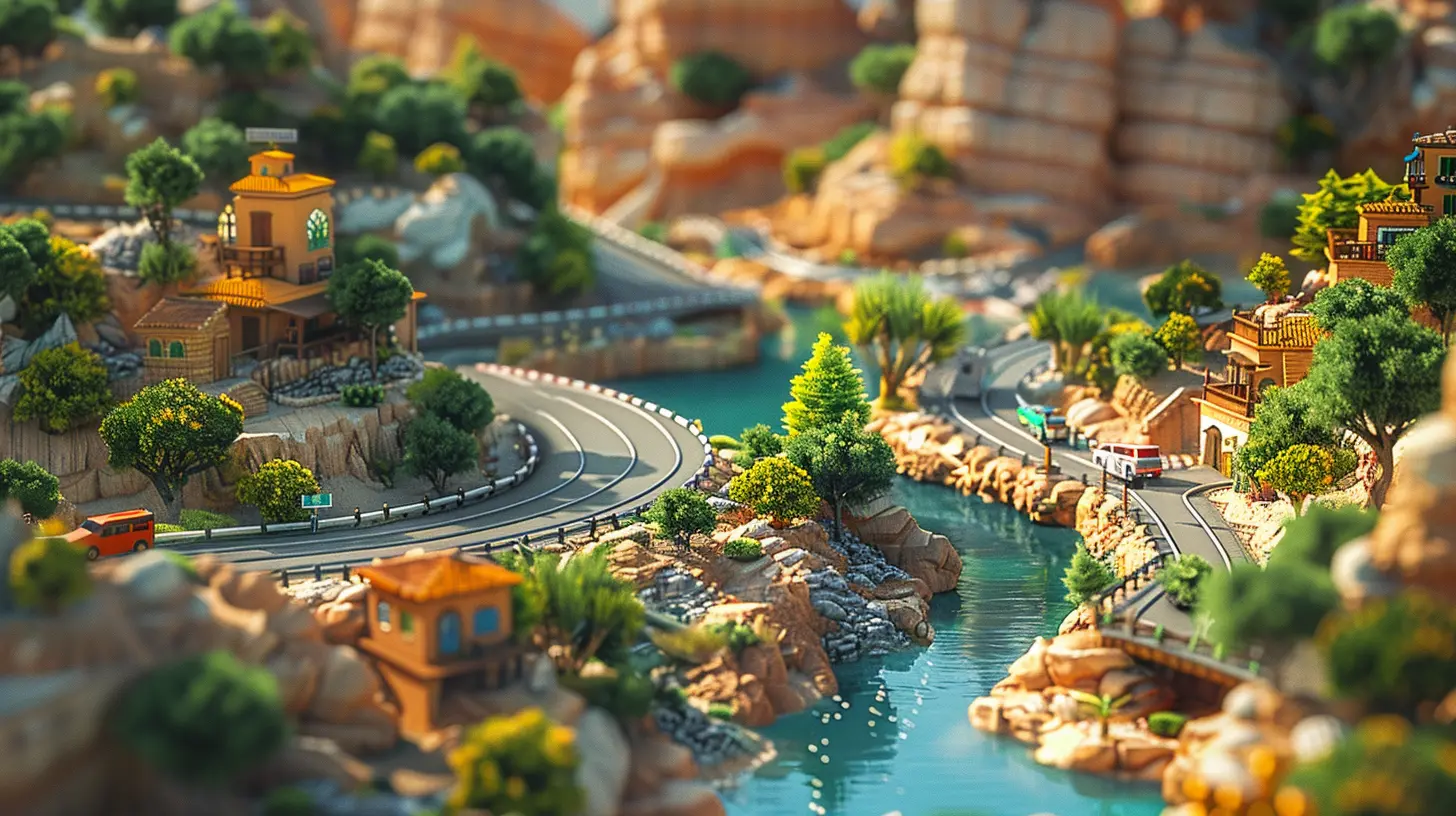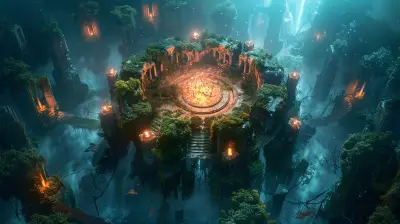How Sandbox Games Are Changing the Way We Play and Learn
29 June 2025
Video games have come a long way from pixelated adventures and high-score showdowns. These days, they offer entire worlds to get lost in—literally. Among the most transformative genres leading this digital evolution are sandbox games. If you've ever lost track of time building an empire in Minecraft, running a custom city in Cities: Skylines, or creating your dream life in The Sims, you’ve already had a taste of their magic.
But sandbox games aren’t just about having fun. They’re changing the way we think, play, and even learn. They’re no longer just ‘games’—they’re virtual playgrounds for creativity, learning, and self-expression.
Let’s dive into how sandbox games are reshaping not just the gaming world, but the entire concept of learning and personal development.
What Exactly Are Sandbox Games?
Before we jump into the deep end, let’s start with the basics.A sandbox game is a type of video game that allows players a high degree of freedom to explore, create, and interact with the game environment. There’s usually no strict mission structure or linear storyline. Instead, you get a set of tools, a massive open world, and the freedom to do, well… whatever you want.
Think of it like a digital sandbox from your childhood. No rules, no instructions. Just pure, unfiltered creativity.
Why Are These Games So Addictive?
Let’s be real—sandbox games can totally eat up your weekend without you even noticing. But why?It’s simple: they tap into something primal—our natural urge to create and explore.
Whether you’re meticulously crafting a mansion block-by-block or planning traffic systems that rival real-life cities, sandbox games offer a sense of control and purpose that’s incredibly satisfying. You’re not just playing a game; you’re shaping your own universe.
Plus, let’s not forget the dopamine rush that comes from achieving small goals. In a sandbox game, even plopping down a single fence post can be oddly rewarding.
Learning Without Realizing It
Here’s the twist—while you’re out there building skyscrapers and terraforming worlds, your brain is putting in serious overtime. And the best part? It doesn’t even feel like learning.Problem-Solving on Steroids
Sandbox games constantly throw challenges your way. How do you power your growing city without causing blackouts? How do you keep villagers safe from zombies in Minecraft?You’re forced to think critically, plan ahead, and adapt fast. It's like mental gymnastics, but way more fun.
Creativity Unleashed
These games are a blank canvas. Want to build a floating island city? Go for it. Want to recreate the Eiffel Tower block by block? Knock yourself out.Creative thinking isn’t just encouraged—it’s essential. Unlike traditional learning environments, there are no wrong answers. Only endless possibilities.
Real-World Skills in a Virtual Setting
Believe it or not, sandbox games teach you more "real-life" skills than most school textbooks.- Project management: Organizing resources, setting goals, breaking big dreams into smaller tasks—sounds like a job, doesn’t it?
- Collaboration: Multiplayer modes in games like Roblox and Minecraft require teamwork, communication, and even leadership.
- Logical thinking: Redstone circuits in Minecraft? That’s literally basic computer programming in disguise.
- Resilience: Things fail. Plans flop. Structures collapse. Sandbox games teach you to pivot, rebuild, and keep going.
These are life skills, not just game mechanics.
Education Level-Up: More Schools Are Paying Attention
Yep, you read that right—sandbox games are sneaking their way into classrooms.Minecraft Education Edition
This isn’t your childhood Minecraft. The Education Edition is designed to teach everything from geometry to history. Teachers use this digital world to simulate real-life scenarios, build historical landmarks, and even teach coding.Students don’t just absorb information—they interact with it. They build it, explore it, and experience it.
Roblox for Learning
With Roblox’s game creation system, students can actually design and code their own games. It’s the perfect mixture of creativity, storytelling, and logic. And they don’t even realize they’re learning something that could lead to a career someday.Cities: Skylines in Urban Planning
A dream tool for geography and social studies classes. Want to explore how traffic congestion affects a city layout? Wondering how high taxes impact citizen happiness? This game turns these abstract ideas into interactive experiments.The Psychology Behind the Pixels
Let’s face it—sandbox games are brain candy. But there’s psychology behind that joy.The Flow State
Ever get so into a game that you forget to eat, sleep, or even blink? That’s the “flow” state—an immersive experience where effort and enjoyment completely align. Sandbox games are pros at creating this.With just the right balance of challenge and control, they pull you in and make hours feel like minutes. That’s not just fun—it’s deeply therapeutic.
Autonomy and Choice
Humans love choice. It gives us a sense of control over our environment—something that’s often missing in real life. In sandbox games, you’re the boss. You set the goals. You make the call.This autonomy can boost confidence, reduce stress, and even help with anxiety. It’s like a safe space where you’re completely in charge.
Not Just for Kids—Adults Are Hooked Too
Think sandbox games are just for teenagers? Not even close.Adults are diving in head-first, using these games as tools for relaxation, creativity, and even career development.
- Architects use Minecraft to mock up designs.
- Urban planners use Cities: Skylines as a brainstorming tool.
- Storytellers build entire narrative worlds in sandbox environments.
There’s something incredibly cathartic about building a world where the only limit is your imagination—especially when the real world can feel so limiting.
The Social Side of Sandbox Games
We often think of games as solitary experiences. But sandbox games are actually creating entire virtual communities.Collaboration Over Competition
Instead of battling it out, players often come together to build, plan, and solve problems. Minecraft multiplayer servers, Roblox groups, and modding communities all revolve around collaboration.These games break down social barriers. Whether you’re a middle schooler in Texas or a retiree in Sweden, you can connect, share ideas, and create together.
Safe Space for Expression
For many, these games aren’t just entertainment—they’re a form of self-expression. People use them to create art, tell stories, or even process emotions.When words fall short, placing a block might just do the trick.
The Future: Where Are Sandbox Games Heading?
If the past decade is any indicator, sandbox games will only get bigger, smarter, and even more immersive.AI-Powered World-Building
Imagine a sandbox game where AI helps build smarter NPCs, dynamic weather systems, and even evolving storylines based on YOUR actions. The seeds are already being planted.VR Integration
Add virtual reality to the mix, and now you’re not just playing the game—you’re living it. Sandbox games in VR could allow us to physically interact with our creations in ways we’ve only dreamed of.Education 2.0
As gamification continues to gain ground in education, expect to see more curriculums that revolve around sandbox games. These games will likely become essential tools for hands-on, student-centered learning.Final Thoughts: Why Sandbox Games Matter More Than Ever
In a world that often feels rigid and full of rules, sandbox games offer something truly special—a space where you’re free to experiment, fail, try again, and ultimately, grow.They’re changing how we play, yes. But more importantly, they’re changing how we think, how we learn, and how we connect with each other.
So the next time someone tells you gaming is a waste of time, feel free to smile and say, “I’m building the future, one block at a time.”
Because honestly? You are.
all images in this post were generated using AI tools
Category:
Sandbox GamesAuthor:

Tayla Warner
Discussion
rate this article
2 comments
Tate Cannon
Absolutely love how sandbox games unleash our creativity! They’re not just for fun; they teach us valuable skills like problem-solving and collaboration. Let’s embrace this playful revolution and keep exploring new worlds together! 🎮✨
September 26, 2025 at 3:01 AM

Tayla Warner
Thank you! I completely agree—sandbox games are incredible tools for fostering creativity and teamwork while offering endless opportunities for exploration and learning. 🌟
Raegan McVicker
Sandbox games are like digital playgrounds where creativity reigns supreme! They teach us that rules are just suggestions and that imagination has no limits. Who knew building a virtual castle could spark real-life problem-solving skills? Let’s keep playing and learning with style! 🎮✨
July 5, 2025 at 2:29 AM

Tayla Warner
Absolutely! Sandbox games unleash creativity and enhance problem-solving skills, transforming play into a powerful learning experience. Let's keep exploring and innovating! 🎮✨


